species
- Barbastella
- Eptesicus
- Myotis
- Nyctalus
- Pipistrellus
- Vespertilio
Greater horseshoe bat Rhinolophus ferrumequinum
The greater horseshoe bat (Rhinolophus ferrumequinum) is similar to its sister species lesser horseshoe bat (R. hipposideros), as both of them have a conspicuous horseshoe-shaped nose. Lesser and greater horseshoe bats are relatively easy to distinguish from each other based on their body size.
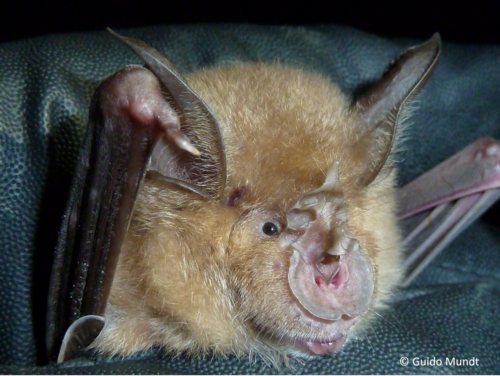
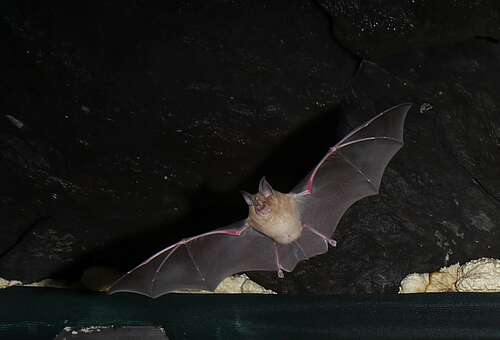
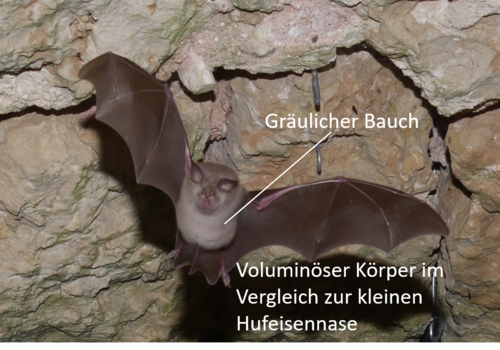
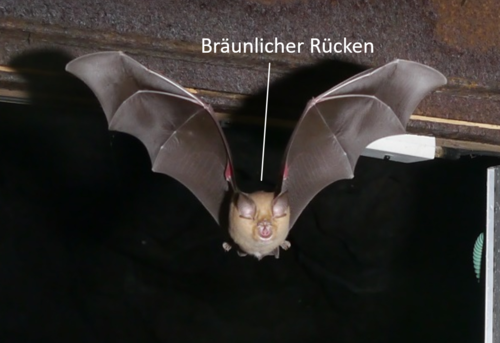
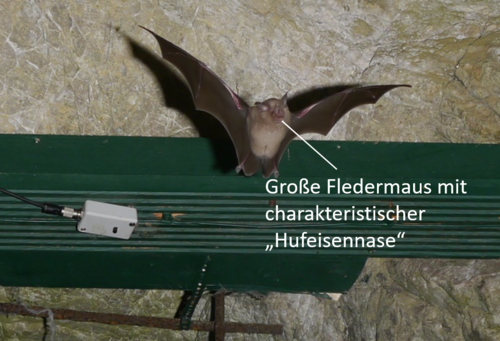
characteristics
| habitat description | Structurally rich, climatically favorable locations. Mosaic landscapes of deciduous forest, pastures, hedges and rows of trees, orchards. |
| quarters | Nursery roosts in warm roof trusses (in southern Europe heat-favored caves). Often alternate roosts in the vicinity are used, e.g. when colonies temporarily split up. Hibernates in underground in caves, cellars, tunnels, etc. |
| reproduction | Nursery colony sizes of 20-200 individuals (in southern Europe even more). Births late June to late July. Males occupy mating roosts in late summer in attics, caves, tunnels, etc., where females sometimes visit them even until spring. |
| size | - Head-torso length: 5.5 - 7.5 cm - Forearm length: 53,0 - 62,4 mm - Wingspan: 35 - 40 cm |
| weight | 18-24 g. |
| color/fur | Light brown, grayish to yellowish dorsal fur. Underside slightly set off, lighter. Juveniles much grayer. |
| nose shape | Characteristic "horseshoe nose". Upper saddle is broadly rounded and blunt. |
| ear shape | Large, broad ears with folds, characteristic shape for horseshoe bat species. Can actively turn ears at base in direction of sound. |
| wing shape | Large and broad. |
| flight | Slow flight low over the ground and near vegetation structures. |
| ultrasonic calls | Chracteristic, long, frequency-constant call is between 79 and 84 kHz. |
| endangerment | Threatened by loss of structurally rich, sustainably managed mosaic landscapes. Red List of Germany (2020): endangered. IUCN (2006): Near Threatened. |